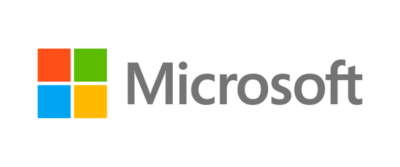The Internet of Things (IoT) began in 1982, when students at Carnegie Mellon University in Pittsburgh decided to modify a Coca-Cola vending machine. Their goal: to avoid making trips for nothing.
They started by installing sensors to monitor inventory, allowing them to know if there were any cans left in the machine without actually having to be in front of it. Later, they added a feature to tell them if the cans were cold or hot. It’s a very simple use case, but it meets a specific need.
Since then, numerous sectors have benefited from the IoT, to greater and lesser degrees of success. In fact, in 2020, IoT Magazine reported that nearly 75% of IoT projects end in failure for one reason or another. The important thing is to meet a need, just like with the vending machine. Occasionally, some companies “put the cart before the horse” and implement an IoT project without first doing the needs analysis.
To get an idea of the current range of IoT applications, just do a search for “Smart […].” You’ll find Smart Home, Smart Healthcare, Smart Building, and Smart Manufacturing, for example.
There are some exceptions to this rule, like the Internet of Cow. Yes, they are even connecting cows for “predictive maintenance,” detecting diseases and even finding the best times for fertility.
Let’s look at some examples.

Smart Home
With the advent of the cell phone, a plethora of connected objects appeared. The most popular are intelligent personal assistants such as Amazon’s Alexa or Google Home. These devices can be integrated with many other smart objects including switches, light bulbs, doorbells, surveillance cameras and much more.
In fact, we now see remote or voice-controlled ovens, refrigerators and other appliances, which can even send notifications like, “We’re out of milk. Do you want me to add it to your grocery list?”
It’s like being in the future! I dream of the day when there will be a smart shower head that turns off the hot water when my teens abuse it, and screens that intelligently control their screen time…

Smart Healthcare
The health care system is no exception, and is greatly benefiting from smart technology. With an aging population, hospitals are overcrowded and staff are often exhausted. Granted, the pandemic didn’t help in this regard, but that’s another topic.
Again, needs must be assessed. What causes “problems” in hospitals? If we could do “predictive maintenance” on humans, it would help a lot. It would be possible to detect diseases before they become serious and thus require extreme treatments such as surgery.
The solution: monitoring devices such as smart watches and other sensors. These can detect changes in temperature, pressure, sugar levels and more. With artificial intelligence algorithms, it will be possible to diagnose diseases quickly and alert your family doctor to send you a prescription.
Other use cases involve geolocation of equipment or beds. Nurses often spend long minutes searching for specialized equipment. If it were possible to find the nearest one without having to search for it, they could avoid major delays.
Among the obstacles to this type of project are the ethical considerations, especially when artificial intelligence is involved. How do you deal with a computer’s mistakes? Who is responsible for the error? The authorities are currently looking into this question. Perhaps we will see an adaptation of Isaac Asimov’s well-known Laws of Robotics.

Smart Building
Building managers have a lot to do, and often have few resources to respond to tenant demands. Whether it’s air conditioning, air quality (a major concern in times of pandemic), energy management or simple maintenance, the needs are numerous and highly diverse.
The IoT is increasingly coming into its own in this field with the development of sensors that can meet all these needs. Presence detectors allow light and temperature control of unoccupied rooms, for instance.
Particle and gas detectors ensure a safe environment, and even let you know when a ventilation system is defective or needs a filter change.
Again, there are many avenues for improvement.

Smart Manufacturing
This last one is becoming more and more popular, and is better-known as Industry 4.0. Considered a 4th industrial revolution happening right before our eyes, it helps companies increase their output and product quality, in addition to ensuring the safety of their employees. Wow, this is promising!
However, we must be careful. Unlike the other sectors we’ve explored, the manufacturing sector is anything but standard. Each plant operates in its own way, with different processes, machines and challenges. A food company has to meet very strict sanitary standards, while an aluminum production plant does not—but instead must learn to live with extreme temperature conditions that can damage machinery and cause accidents.
Some use cases like predictive maintenance may be similar, but the ways of meeting this need will be very different from one plant to another because of distinct machinery working in radically diverse conditions. Hence the importance of identifying the most critical challenges (in frequency or severity) and attacking them one-by-one.
Conclusion
This has just been an overview of some of IoT’s major applications. There is a whole range of others. As we have seen, the main idea is to meet a need. Without that, the chances of success are very slim.
It is also wise to proceed gradually. You wouldn’t think of climbing Mt. Everest without being prepared. The same is true for IoT. There is work to be done beforehand. As such, I suggest starting with a proof of concept, followed by a pilot project, before finally moving on to company-wide implementation. It is important to note that there is often a preparation phase for this kind of project. The cost can be significant in the beginning without seeing results for a time.
Whether it’s preparing the network infrastructure (after all, the data has to go somewhere, and if the network isn’t ready for that traffic, it has to be upgraded), configuring the platforms and tools to connect the data, or many other steps, everything has to be done properly from the start.
Subsequent projects will benefit from this step, but you have to be aware that setting them up requires an initial cost. The return on investment is not immediate, but it will come and it will be worth it.
Don’t hesitate to contact us if you want to start an IoT project. We can help you identify promising projects for your company, and ensure their study and implementation.




